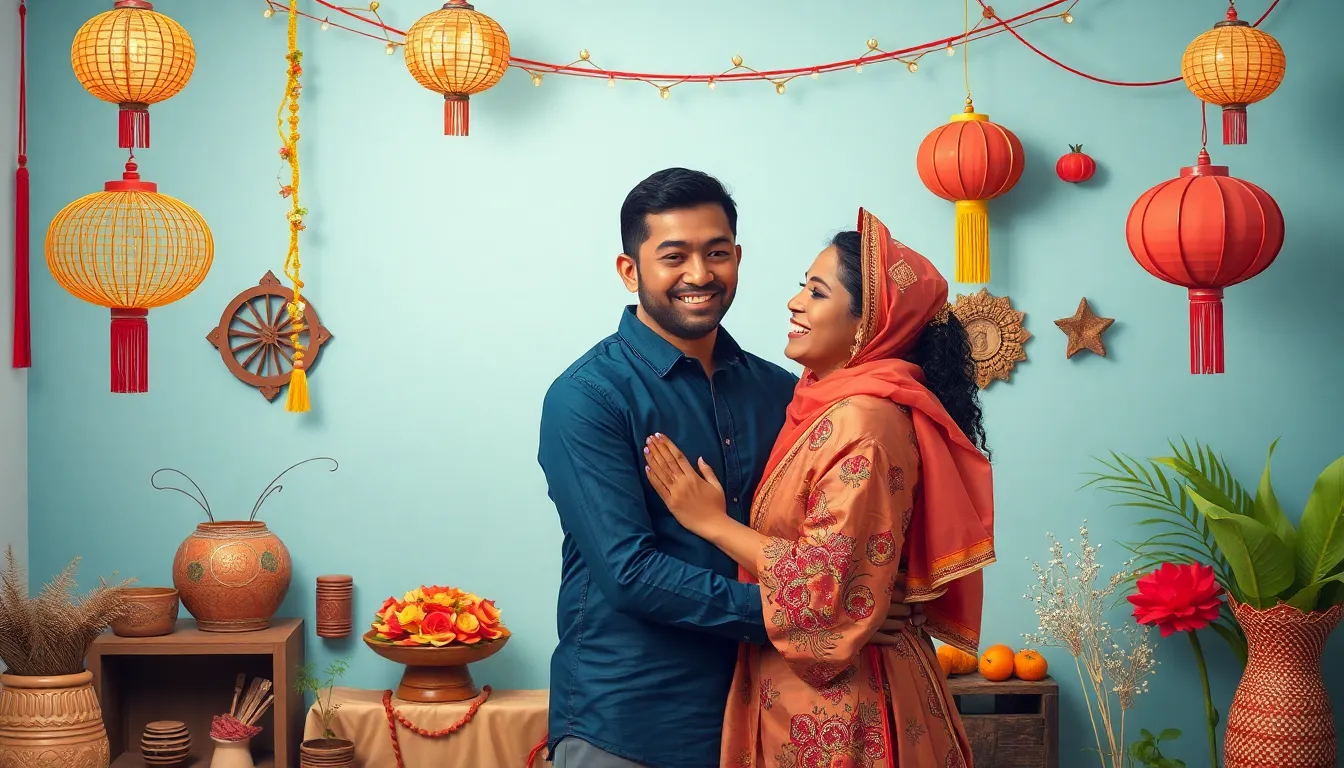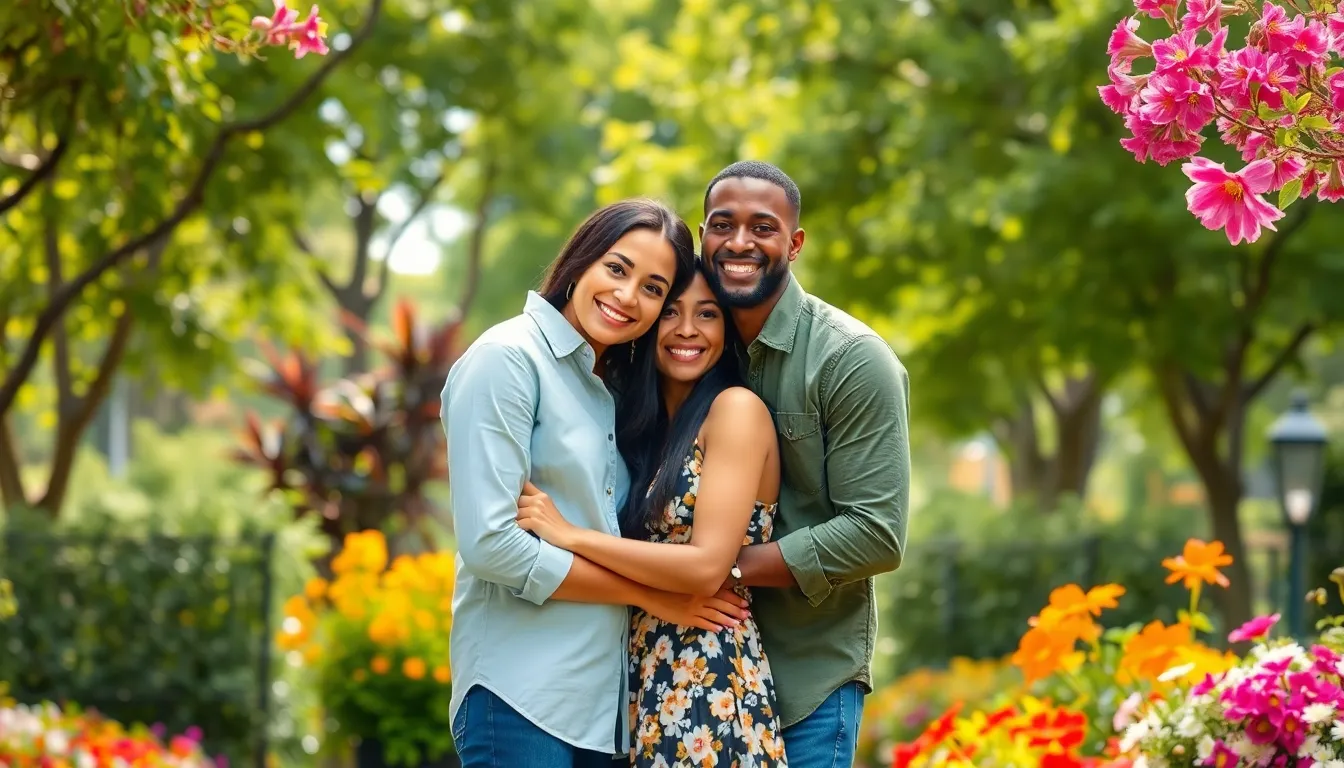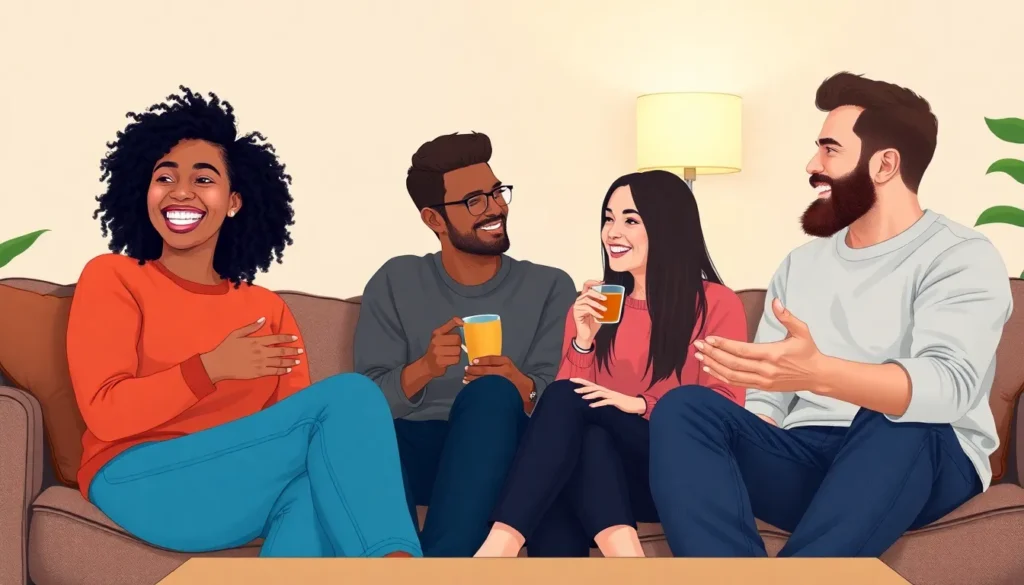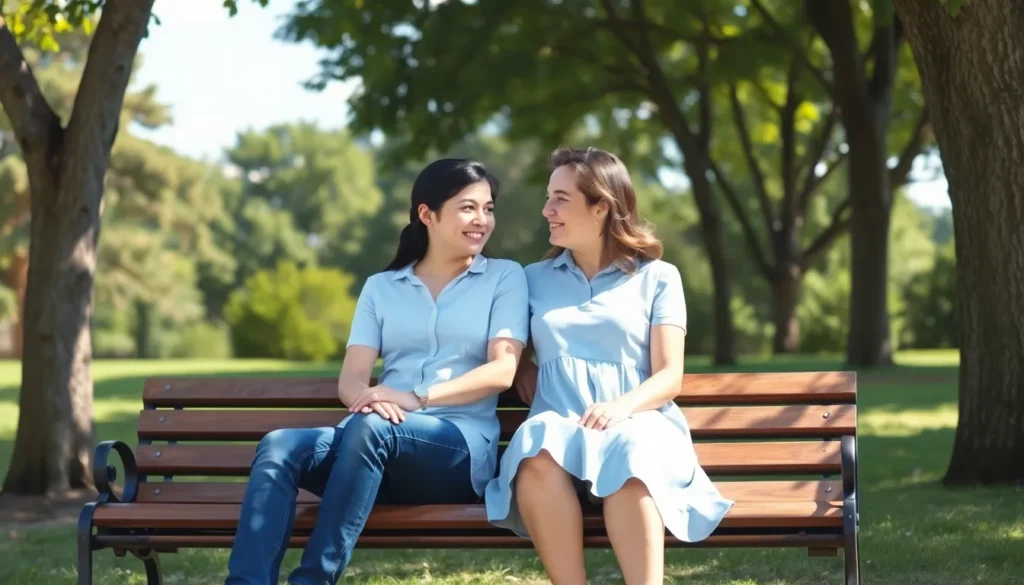Love knows no boundaries, and when it comes to interracial marriage, that couldn’t be truer. Couples from different backgrounds are breaking down barriers and proving that love is the ultimate unifier. It’s like mixing peanut butter and jelly—two distinct flavors that create something deliciously unique.
Table of Contents
ToggleUnderstanding Interracial Marriage
Interracial marriage encompasses unions between partners from different racial and ethnic backgrounds. This type of marriage faces unique challenges, including societal perceptions and familial acceptance. Couples engaged in these relationships often navigate complex cultural dynamics. Diversity in backgrounds enriches their partnership, resulting in a blend of traditions and perspectives.
Various studies indicate that interracial marriages are on the rise. In 2021, about 19% of newlyweds in the United States were in interracial unions, according to the Pew Research Center. These marriages present different opportunities for growth and mutual understanding. Navigating cultural differences fosters deeper communication and connection between partners.
Support from communities plays a significant role in the success of interracial marriages. Couples frequently report that embracing their differences enhances their relationships. Building a network of like-minded individuals can offer encouragement and validation. Moreover, children from interracial marriages often develop a broader worldview, benefiting from exposure to various cultural norms and practices.
Legal aspects also affect interracial marriage. Since the historic Loving v. Virginia case in 1967, legal barriers have diminished, affirming the rights of interracial couples across the United States. Societal acceptance continues to evolve, although challenges persist. Addressing these challenges requires ongoing dialogue and education about the value of diverse relationships.
Understanding interracial marriage involves recognizing its complexities and celebrating the enrichment it brings to society. Emphasis on love transcending differences remains a powerful narrative for these couples, demonstrating that unity in diversity creates a beautiful tapestry of human experience.
Historical Context

Interracial marriage has a rich history shaped by cultural and legal developments. Understanding these elements lends insight into the evolving dynamics of such unions.
Cultural Influences
Cultural influences greatly affect interracial marriages. Each partner brings unique traditions, values, and customs that enrich their relationship. Engagement with different cultural practices often fosters wider perspectives for both individuals and communities. Celebrating cultural diversity can strengthen bonds, create mutual respect, and promote acceptance among families and friends. Instances of shared rituals, language, and celebrations signify a blending of backgrounds, providing children with a broader worldview. Recent trends illustrate increasing acceptance, highlighting a shift in societal attitudes that showcases a growing willingness to embrace differences.
Legal Changes
Legal changes significantly impact the landscape of interracial marriage. The landmark Loving v. Virginia case, decided in 1967, struck down laws prohibiting interracial unions. This decision affirmed the rights of couples to marry regardless of race, catalyzing social change. Subsequent legislation has further dismantled discriminatory practices, progressively permitting interracial relationships to flourish. Challenges persist, yet advocacy efforts continue, promoting equal rights for all couples. Current data from 2021 shows approximately 19% of newlyweds in the U.S. are in interracial marriages, indicating the continued influence of legal recognition on societal acceptance.
Benefits of Interracial Marriage
Interracial marriage offers numerous benefits that enrich the lives of couples and their families. These unions foster growth, understanding, and cultural exchange.
Enhanced Cultural Awareness
Cultural awareness flourishes within interracial marriages as partners share traditions and values. Each individual introduces unique practices that promote mutual respect and acceptance. Exposure to different customs broadens horizons and cultivates appreciation for diversity. Celebrating holidays and rituals together strengthens connections between families and communities. Couples learn and grow through these new experiences, teaching their children the value of cultural richness.
Broader Perspectives
Broader perspectives result from the diverse backgrounds in interracial relationships. Each partner brings distinct viewpoints shaped by their cultural experiences. Navigating these differences encourages open communication and fosters deeper connections. Children raised in these households gain a wider worldview, adapting to multiple cultural norms. This exposure equips them with essential skills for empathy and global understanding, ultimately preparing them for a diverse society.
Challenges Faced
Interracial couples encounter several challenges as they navigate their relationships. These challenges arise from societal stigmas and family dynamics that can complicate their experiences.
Societal Stigmas
Societal stigmas often create obstacles for interracial couples. Discrimination from communities may lead to negative perceptions, impacting relationships. Media representation sometimes perpetuates stereotypes, reinforcing biases that couples must overcome. Studies show that about 39% of people believe interracial relationships face societal disapproval. Couples frequently report feeling isolated or judged, which can strain their bond. Finding supportive communities becomes crucial, as shared experiences foster resilience against societal pushback.
Family Dynamics
Family dynamics pose another challenge for interracial couples. Families may struggle to accept a partner’s differing cultural background, leading to tension or conflict. Partners often face pressure from relatives who may hold preconceived notions about race and cultural differences. Approximately 27% of interracial couples experience disapproval from their families, complicating relationship growth. Open communication remains vital, allowing couples to address concerns and educate family members. Building bridges through understanding creates a more harmonious environment that supports relationship longevity.
Interracial Marriage in Modern Society
Interracial marriage continues to shape modern society, reflecting changing norms and attitudes toward diversity. Acceptance and understanding now characterize many communities, enhancing the experiences of couples from different backgrounds.
Changing Attitudes
Attitudes toward interracial marriage have shifted significantly in recent decades. Research indicates that public approval has escalated, with approximately 87% of Americans supporting interracial unions as of 2021. Societal perceptions have evolved, leading to broader acceptance among younger generations. These shifts correlate with increased personal interactions among diverse groups, breaking down long-held prejudices. Acceptance involves recognizing the value of shared experiences, cultural exchange, and the richness that these unions bring to society.
Representation in Media
Media representation plays a crucial role in normalizing interracial relationships. Television and film increasingly feature diverse couples, reflecting contemporary society’s acceptance. Positive portrayals provide relatable examples for audiences, demonstrating love transcending racial boundaries. Such visibility fosters conversation, reducing stereotypes and encouraging open dialogue. High-profile interracial couples in entertainment also serve as role models, further influencing societal attitudes and inspiring others to embrace diversity in their relationships.
Interracial marriage embodies the beauty of love that transcends boundaries. As couples navigate their unique challenges they enrich their lives through diverse cultural experiences. This ongoing journey fosters understanding and acceptance not only within their relationships but also in their communities.
The rising acceptance of interracial unions reflects a broader societal shift toward inclusivity. With increasing support and representation in media these relationships continue to inspire others to embrace diversity. Ultimately the celebration of love in all its forms strengthens the fabric of society and highlights the importance of unity in diversity.








